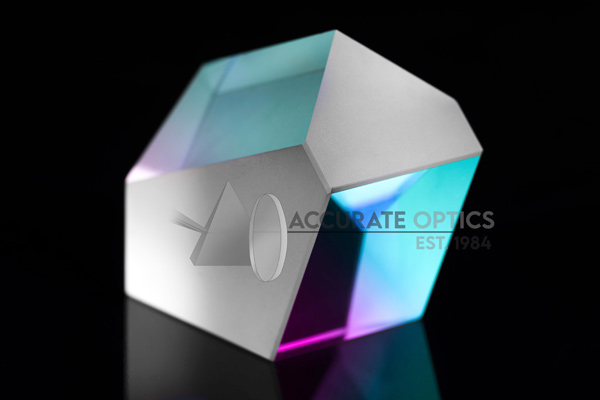How Thin Film Coatings Impact Medical Imaging Systems?
In the field of healthcare, achieving precise and clear medical imaging is crucial for accurate diagnoses and effective treatments. One pivotal yet often overlooked aspect contributing significantly to this precision is the application of Thin Film Coatings within medical imaging systems. These coatings, operating at a nanoscale level of precision, play a fundamental role in optimizing and refining the performance, reliability, and accuracy of various medical imaging technologies. Let’s explore the intricate interplay between Thin Film Coatings and the transformation they bring to the realm of medical imaging.
Precision Engineering in Medical Imaging
Medical imaging systems demand unparalleled precision, reliability, and clarity to aid healthcare professionals in diagnosing ailments and planning treatments. Thin Film Coatings, meticulously engineered at nanoscale precision, serve as vital components elevating the performance and accuracy of these systems.
The Significance of Thin Film Coatings
- Enhanced Image Clarity: Coatings minimize reflections and optimize light transmission, ensuring sharper and more detailed images critical for accurate diagnoses.
- Spectral Precision: Tailored coatings enable the selective transmission of specific wavelengths, essential in various imaging modalities such as X-ray, MRI, and CT scans.
- Durability and Protection: They shield optical components within imaging systems from wear, tear, and environmental factors, ensuring sustained performance and equipment longevity.
Applications in Medical Imaging
- X-ray and Radiography: Thin Film Coatings optimize lenses and sensors, reducing scattering and enhancing contrast in X-ray images for better tissue differentiation.
- Magnetic Resonance Imaging (MRI): Coatings on RF coils improve signal-to-noise ratios, enhancing imaging quality and aiding in the visualization of soft tissues with greater clarity.
- Computed Tomography (CT) Scans: Coatings on detectors and mirrors improve light collection efficiency, resulting in higher-resolution images essential for accurate diagnosis.
Advancements Driving Innovation
Innovations in Thin Film Coating technologies continue to shape medical imaging. Advancements aim to further refine spectral properties, improve biocompatibility, and develop coatings specific to emerging imaging techniques.
Collaborative Research and Development
Extensive collaboration between coating manufacturers, medical imaging specialists, and researchers is vital. Rigorous testing ensures that coatings meet stringent healthcare standards and perform reliably in medical settings.
Future Prospects
The future of medical imaging hinges on the evolution of Thin Film Coatings. Anticipate advancements that enable coatings to address specific diagnostic needs, exhibit improved biocompatibility, and adapt to evolving imaging technologies.
Conclusion:
Thin Film Coatings stand as integral components revolutionizing medical imaging systems. Their ability to enhance clarity, precision, and durability within these systems ensures that healthcare professionals have access to accurate and reliable diagnostic tools. As innovations pave the way forward, these coatings remain instrumental in pushing the boundaries of medical imaging for improved patient care and diagnostic accuracy.
Important FAQs:
1. What are Thin Film Coatings in Medical Imaging Systems?
– Thin film coatings are layers of material applied to optical components within medical imaging systems to enhance their performance and functionality.
2. How Do Thin Film Coatings Improve Medical Imaging Systems?
– Thin film coatings improve medical imaging systems by reducing reflection, increasing transmission, controlling light dispersion, and minimizing unwanted artifacts, thereby enhancing image quality and diagnostic accuracy.
3. What Role Do Thin Film Coatings Play in Optical Components of Medical Imaging Systems?
– Thin film coatings play a crucial role in optical components such as lenses, mirrors, filters, and beamsplitters within medical imaging systems by optimizing light transmission, reducing glare, and enhancing contrast.
4. How Do Anti-Reflective Coatings Impact Medical Imaging Systems?
– Anti-reflective coatings on optical elements in medical imaging systems minimize surface reflections, allowing more light to pass through the system and improving image contrast, clarity, and brightness.
5. What is the Importance of Dichroic Coatings in Medical Imaging Systems?
– Dichroic coatings selectively transmit or reflect light based on wavelength, enabling efficient separation of different spectral bands in medical imaging systems, which is vital for multispectral imaging and fluorescence detection.
6. How Does Coating Durability Affect the Longevity of Medical Imaging Systems?
– Durable thin film coatings protect optical components from environmental factors such as moisture, chemicals, and abrasion, ensuring the longevity and reliability of medical imaging systems.
7. Can Thin Film Coatings Enhance the Performance of X-ray Imaging Systems?
– Yes, specialized thin film coatings applied to X-ray detector components can improve sensitivity, reduce noise, and enhance contrast in X-ray imaging systems, leading to more accurate diagnostic results.
8. How Do Thin Film Coatings Impact Optical Fibers in Medical Imaging Systems?
– Thin film coatings on optical fibers used in medical imaging systems can improve light transmission efficiency, reduce signal loss, and enhance signal-to-noise ratio, thereby improving image quality and system performance.
9. What Considerations Should Be Made When Selecting Thin Film Coatings for Medical Imaging Systems?
– Considerations such as wavelength range, optical performance requirements, environmental conditions, and compatibility with other system components should be taken into account when selecting thin film coatings for medical imaging systems.
Thank you for taking the time to explore our FAQs! If you have any further questions or need assistance, feel free to reach out to us.








